When I first stepped into Old Town Prague, I didn’t need a map to know I was somewhere important.
The worn cobblestones, the chime of the Astronomical Clock, and the sheer volume of people coming and going. This is the oldest part of the city, where medieval streets twist around churches, towers, and squares.
In this article, I’ll show you how to explore Prague’s Old Town or Staré Město, whether you’re watching the Astronomical Clock strike the hour in the main square, visiting the Gothic spires of the Church of Our Lady before Týn, or slipping into quiet courtyards most travellers miss.
I’ll help you decide what’s worth seeing, when to go, how long to stay, and where to eat. If you’re planning a trip to Prague and want to experience the Old Town beyond the surface, you’re in the right place.
This post may contain affiliate links, meaning I get a commission if you decide to purchase something through the links, at no additional cost to you. Read my Affiliate Disclosure.
What Is Old Town in Prague, and Why Visit It?
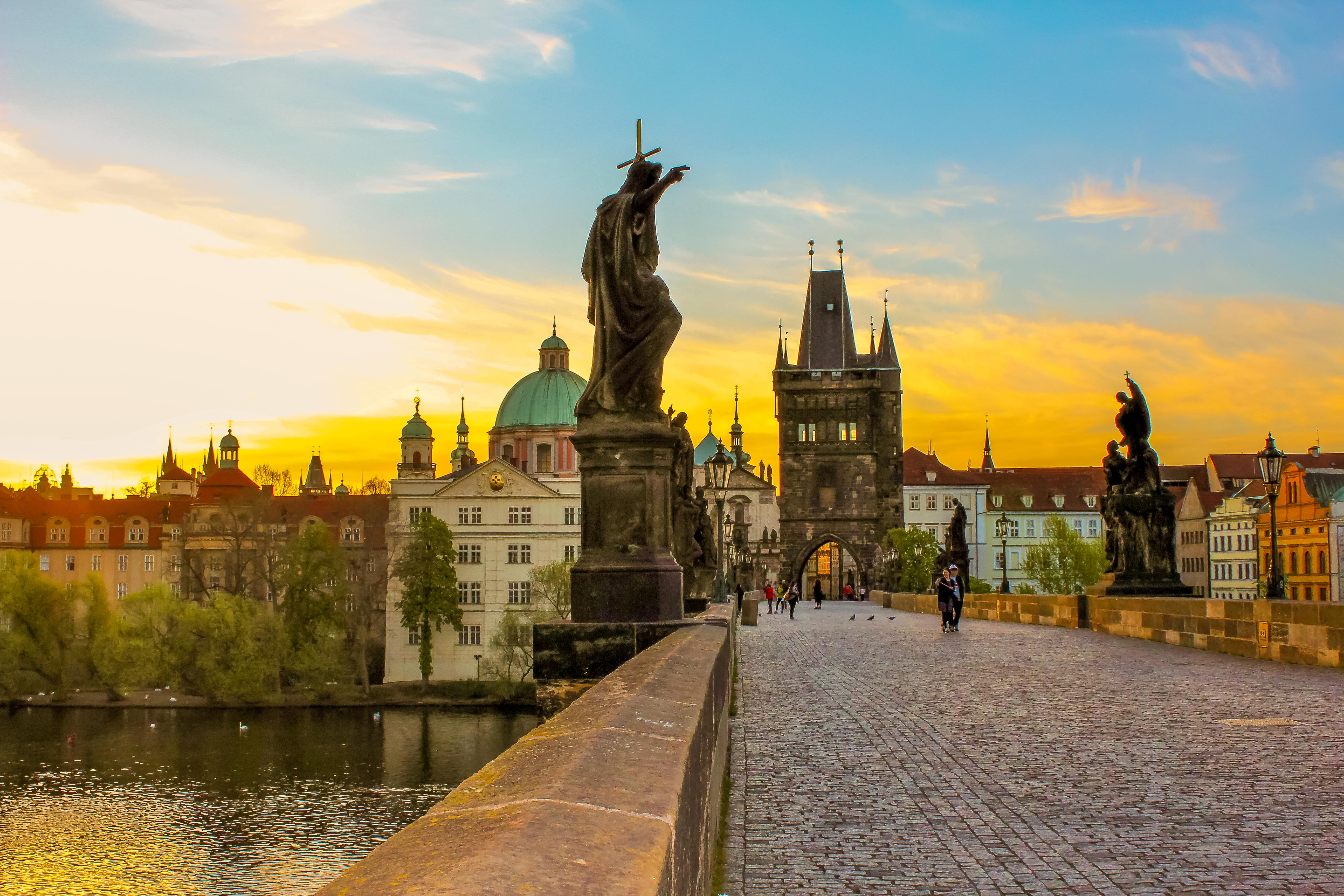
Where is Old Town located?
Old Town is the historic center of the city, located on the eastern side of the Vltava River. It sits between the Charles Bridge and the New Town and is one of the most visited areas in Prague. Everything is within walking distance, making it easy to explore on foot. This is where many walking tours begin and where much of Prague’s oldest architecture is found.
What makes it different from other neighbourhoods in Prague?

The district of Old Town stands apart because of its age, layout, and atmosphere. While other parts of the city have changed with time, the Old Town has kept its medieval character. The streets aren’t laid out in a straight line—they twist and turn unexpectedly, leading you through archways, small squares, and quiet courtyards that often go unnoticed. It invites you to slow down and wander without a plan.
Compared to New Town, which was designed later in the 14th century with wide boulevards and large public buildings, Old Town feels more intimate. New Town is where you’ll find shops, offices, and a faster pace. It’s the entertainment district, while Old Town is historical.
The Jewish Quarter, or Josefov, sits just north of Old Town Square. It’s smaller and quieter, with its own rich history, synagogues, and a deeply moving cemetery. While it shares some of Old Town’s past, it’s distinct in its cultural story and is more focused in size.
Across the river, the Little Quarter (Malá Strana) feels more residential. It’s lined with noble palaces, quiet gardens, and hillside views. It has its own charm, but it’s less dense and doesn’t have the same mix of public gathering spaces that the Old Town does.
Further uphill, the Castle District (Hradčany) is where history meets power. It’s home to Prague Castle and grand government buildings. It feels more formal, more ceremonial. You come here to look out over the city or visit major sites.
A Brief History of the Old Town in Prague, Czech Republic
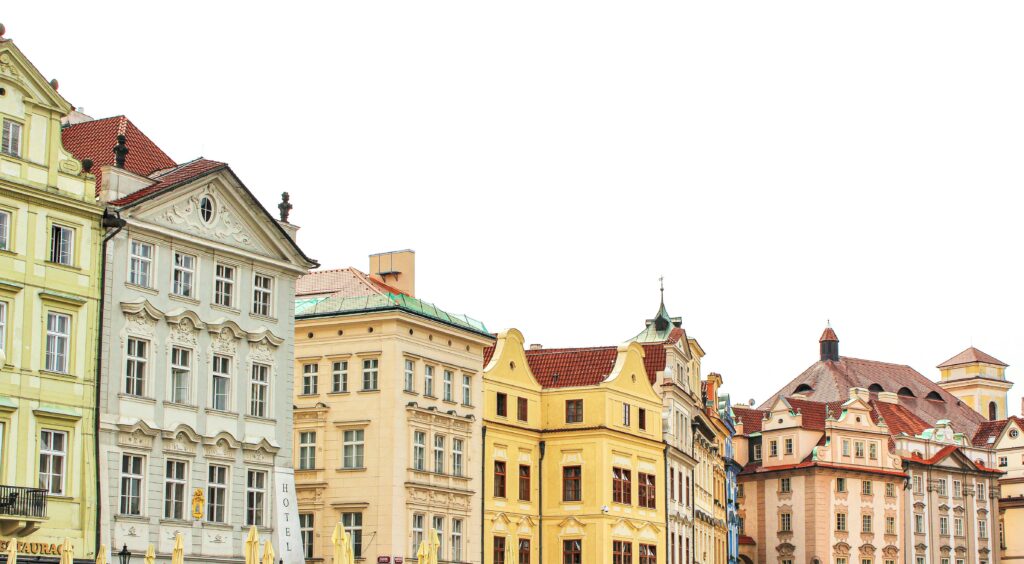
The story behind the cobblestones
Old Town Prague dates back over a thousand years. Many of the streets you walk on today follow the same paths they did in medieval times. It began as a marketplace with 13 gates and a large moat. The cobblestones aren’t just decorative—they mark where kings, merchants, artists, and everyday citizens walked.
How the Old Town grew around the Vltava River
The Vltava River has always been at the heart of Prague. Old Town developed just east of it as a trading hub. Markets, guilds, and craft workshops flourished here thanks to the river’s trade routes. Charles Bridge later connected the Old Town to the castle side of the city, helping it grow even more.
Historical turning points that shaped this area
Several key events shaped Old Town Prague. In the 14th century, Emperor Charles IV made it part of his imperial city plan, bringing in architects, scholars, and artists. Later, the Hussite Wars and periods of religious change left their mark on churches and public spaces. In the 20th century, both World Wars and the communist era passed through here, but the district remained mostly intact—one of the reasons it feels so authentic today.
Top Things to See in the Old Town of Prague

Charles Bridge: A timeless walk across the Vltava
While technically crossing into another district, Charles Bridge begins in Old Town and is one of its most iconic spots. I recommend going early in the morning or late at night to avoid the daytime rush. The statues lining the bridge, the sounds of musicians playing softly in the background, and the view of the castle ahead make this walk unforgettable. It’s not just a way to get from one side to the other—it’s an experience in itself.
Old Town Square: The biggest gathering point
Most people stop here to take a photo or to meet up with a tour. The square is one of the oldest in Europe and has been the heart of city life for centuries. It’s surrounded by Gothic, Baroque, and Renaissance buildings—and if you take your time, you’ll notice the details in the facades that most people rush past.
At the centre is the Jan Hus Monument, who was a famous religious reformer executed for his beliefs. Street performers, musicians, and market stalls often fill the space, especially around the holidays and festivals.

The Astronomical Clock: What to expect at the hourly show
This 15th-century clock is one of Prague’s most popular attractions—and the hourly show draws a crowd. Every hour, the small windows above the clock open and the twelve apostles pass by, while a skeleton figure rings a bell. It only lasts a minute or so, and while it’s fun to watch once, I think it’s even more interesting to walk around the tower and study the mechanics and artwork of the clock itself. Early mornings or later in the evening are better if you want to avoid the crowd, and beware of pickpockets.
Old Town City Hall: Climb for the view, stay for the history
Attached to the Astronomical Clock, the Old Town City Hall is more than just a tower to climb. The viewing platform at the top offers one of the best views of the square and rooftops. Inside, you can take a tour through the Gothic chapel, historic halls, and even underground chambers that reveal the older layers of the city.

Church of Our Lady before Týn: Gothic towers worth a look
You’ll recognize this church by its twin spires, which rise sharply over the Old Town Square. It’s one of Prague’s most iconic buildings, and while the outside is impressive, the interior is peaceful and worth stepping into. It can be easy to miss the entrance—it’s tucked through an archway—so don’t be afraid to look for it. Inside, you’ll find centuries-old tombs and a chance to step away from the noise outside.
Klementinum: A peaceful place to pause
Tucked just a few minutes’ walk from the square, the Klementinum is a former Jesuit college and now home to the National Library. What draws most visitors is the beautiful Baroque library hall and the Astronomical Tower with panoramic city views. The guided tour is the only way to access it, and though short, it’s worth it. For me, it’s one of the quietest and most contemplative spaces in Old Town Prague.
Powder Tower and Municipal House: Where the Old Town begins
The Powder Tower once served as part of the city’s fortification and as a ceremonial gateway into the Old Town. You can climb to the top for views, though the stairwell is narrow. Right next door is the Municipal House—an Art Nouveau gem with a stunning interior, home to concerts and exhibitions. I love walking by here at sunset when the golden light hits the tower’s dark stone—it feels like a portal to another time.
What to Do in Prague’s Old Town that is Off-the-Beaten-Path
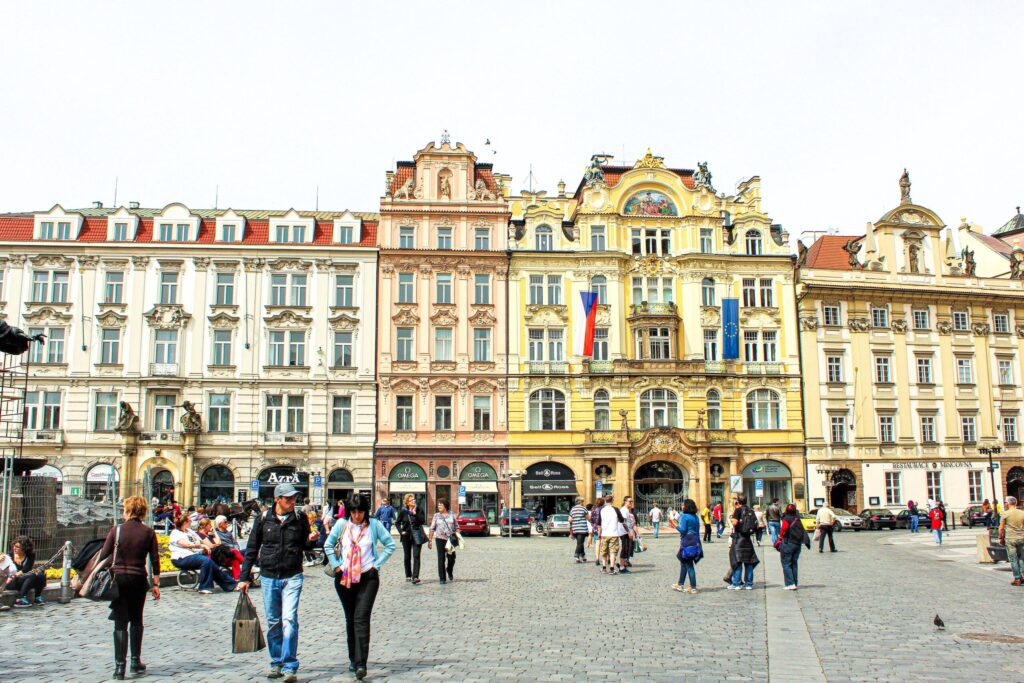
Even in one of the most visited parts of Prague, there are quiet corners if you know where to look. These are some lesser-known places I found that are away from the crowds.
Tucked-away courtyards off Karlova Street
Karlova Street is one of the busiest routes leading to Charles Bridge, but if you step just a little off the main path, you’ll find small courtyards that feel like another world. Some are marked, others you just stumble upon.
Ungelt Courtyard: A quiet spot behind the square
Just behind Týn Church is Ungelt, a historic courtyard that was once a protected merchants’ area. Now it’s filled with cafés, a few small galleries, and a calm, open space.
St. Anne’s Monastery: A surprising space for reflection
Also called the Prague Crossroads, this deconsecrated church turned cultural space has a powerful atmosphere. It’s not on most tourist maps, and that’s part of the draw. The interior is sparse and quiet, often used for exhibitions or events, but when it’s empty, it becomes one of the most peaceful places in the city.
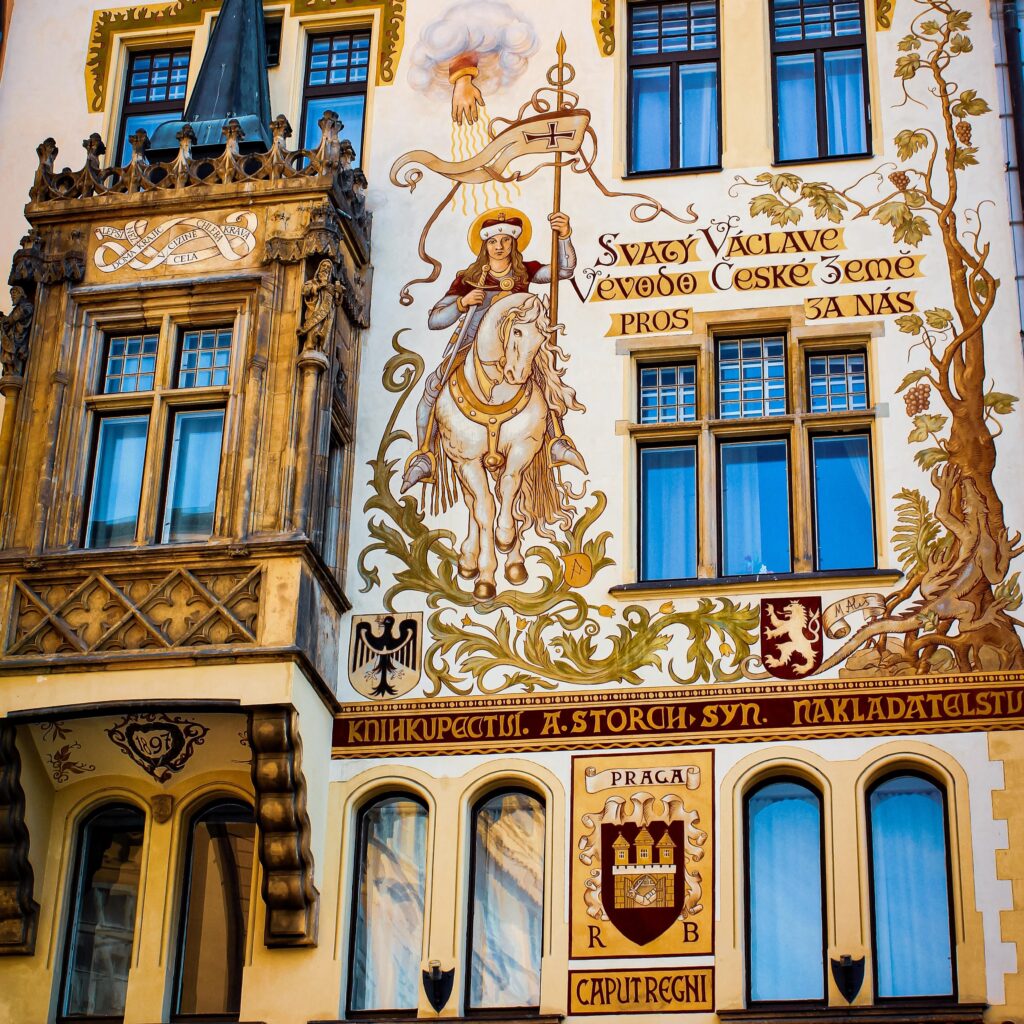
Alley of Prague’s History: A hidden walkthrough
This small passage connects Karlova Street to the Clementinum and is easy to miss unless you’re looking for it. The alley has a short timeline of Prague’s major historical moments painted along the walls, along with old photos and illustrations. It’s a quick but meaningful way to learn something new while escaping the noise of the main streets.
Church of St. James: A place for music and awe
This lesser-known Baroque church near Týn has an elaborate interior. But my favourite way to experience it is in the evening during one of their classical music concerts. The sound echoes through the arches and painted ceilings, and for a while, it feels like the city fades away. If you have time, I highly recommend checking the schedule and attending a concert here—it’s a truly beautiful experience.
Havelské tržiště (Havel Market): Small and local
This market has been running since the 13th century, and while it’s become a bit more tourist-focused over time, it still has charm. I enjoy sampling local street food, like trdelník (a sweet pastry rolled in sugar and cinnamon) and chlebíčky (open-faced sandwiches with various toppings), while browsing through a variety of goods, including fresh produce, handicrafts, souvenirs, and traditional Czech products like sausages and cheeses.
Local Tips for Eating and Drinking in Old Town Prague
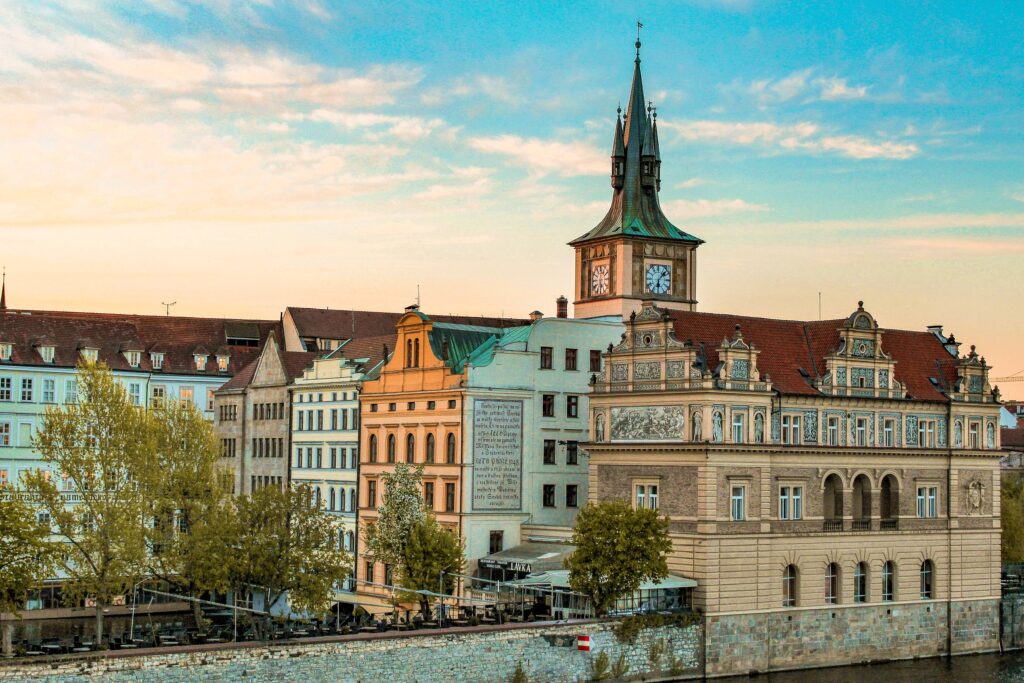
Old Town can be a bit tricky when it comes to food. Around the main square, you’ll find plenty of places catering to tourists—but I try to avoid menus with pictures and hosts waving me in. With just a little effort, it’s possible to enjoy a meal that feels local, relaxed, and honestly priced. Here are a few spots I’ve either returned to or recommend to friends.
Pauseteria – A cute café for breakfast
📍 U Radnice 11/4 Staroměstské náměstí
I found this spot by accident. They serve great coffee, homemade pastries, and healthy breakfast options in a cozy space.
Restaurace Století – A reliable lunch spot near the river
📍 Karoliny Světlé 21
A little hidden and often less crowded, this restaurant offers a lighter, more modern take on Czech cuisine. Their lunch menu is well-priced and changes often. It’s a good place to sit down, recharge, and enjoy something fresh without the tourist scene.
Bistro Sisters – For something light, fast, and local
📍 Dlouhá 39
This modern Czech bistro specializes in chlebíčky—open-faced sandwiches topped with everything from beetroot and goat cheese to ham and horseradish. It’s ideal if you want something quick. There’s also a wine bar next door if you want to linger.
Pivovar Staré Město – A small brewery with a big heart
📍 Linhartská 6
This is one of those places that’s easy to walk past if you’re not looking for it. The house-made beer is reason enough to visit, but the food is also solid. It’s quieter than the bigger beer halls and has a relaxed, almost neighbourhood feel—despite being right in the city center.
Mincovna – Good food in a busy location
📍 Staroměstské náměstí 930/7
Right on the square, but worth it. Mincovna serves up well-prepared Czech dishes with seasonal ingredients. It’s a bit more polished than a traditional pub, but still feels grounded. I often suggest it to friends who want to stay near the main sights but avoid tourist-trap food.
Restaurace Století – A cozy spot near the river
📍 Karoliny Světlé 21
A little hidden and often less crowded, this restaurant offers a lighter, more modern take on traditional Czech cuisine. Their menu is well-priced, and the atmosphere is warm and welcoming.
Final Thoughts
Exploring Old Town Prague slowly reveals a side of the city most travellers overlook—one filled with quiet beauty, everyday moments, and timeless streets.
Want more slow travel tips and honest guides like this? Sign up for my newsletter and get thoughtful inspiration for your next European journey.


